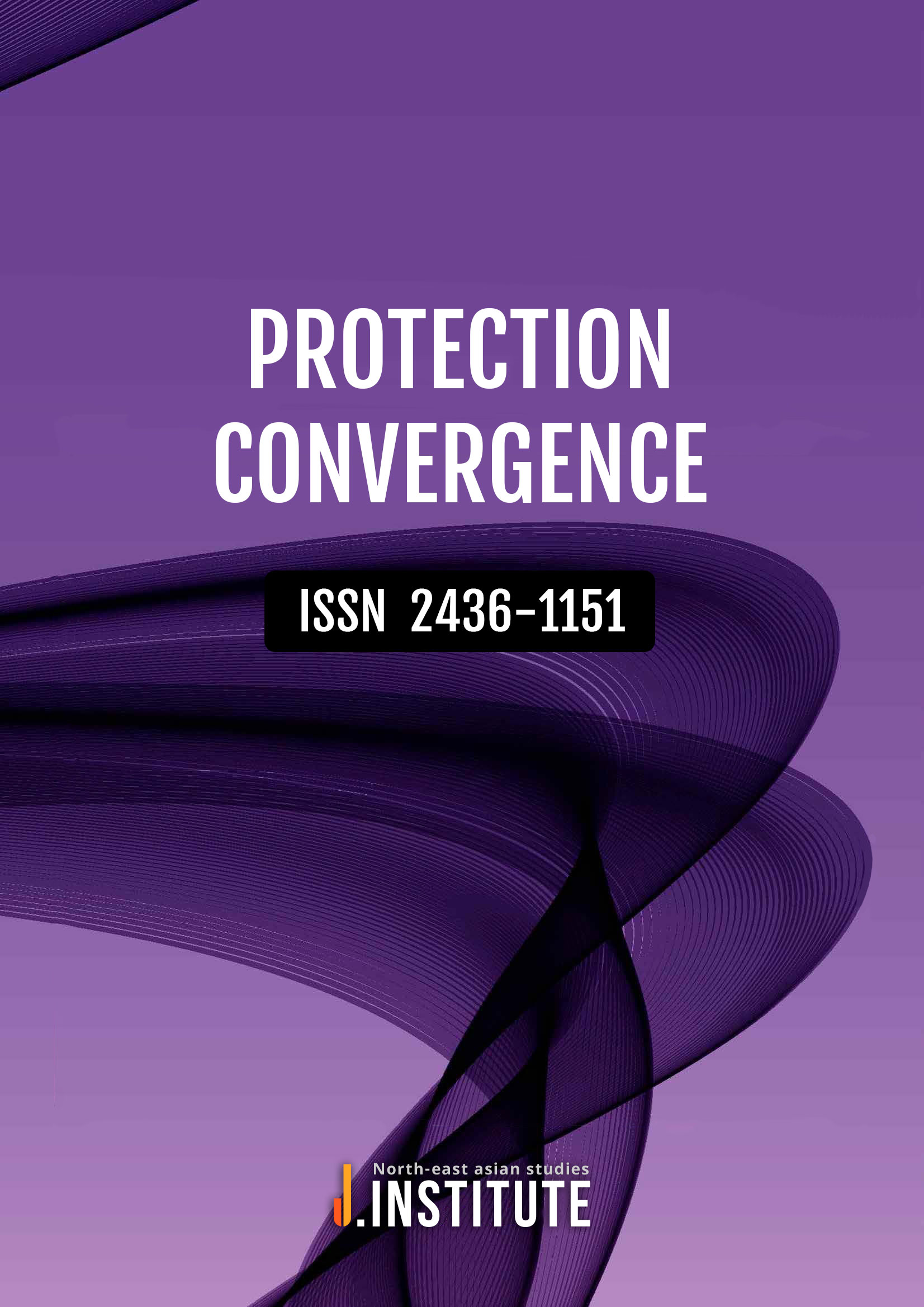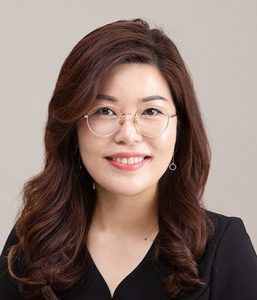The beauty industry, which started with the Historically, human desire to show their status visually and to be protected internally and externally has been, has developed day by day into a high-value-added industry through global growth.
There are several links between beauty art and human protection Beauty art is art related to human beauty, and protection means protecting and respecting human well-being and safety through the convergence of these relationships, beauty, and art are human Self-esteem. So the beauty arts are helping to protect human beings who respect social justice, equality, and diversity.
In addition, beauty art and human protection are interdependent concepts, and human growth and development can be promoted by pursuing and protecting beauty. This connectivity is contributing to enhancing overall human well-being, and health at the individual and societal levels.
Therefore, this journal is a purpose core value of human protection, it is the theoretical basis of a field that requires expertise and creativity in a more complex background, such as highly professional yet increasingly complex academic knowledge and rapidly changing technology, for the revitalization and academic development will contribute to of beauty art studies.
Detail with we recommend that potential authors review recent issues to determine whether their paper is appropriate to the journal.
Aims & Scope
Area 1 Consilience Human Protection
Area 2 Beauty & Healthcare
Area 3 Progressive Arts
Latest Articles
+ View all articles
-
Purpose: In this study, in order to find out how beauty tech convergence technology is applied in the field, we conducted in-depth investigations using focus group interviews to explore the perceptions and attitudes of managers and users regarding the use of facial skin measurement devices. Method: The research participants were 16 people, 4 each from S City and G Province, selected through a purposeful sampling method among managers and users who use facial skin measurement devices according to the period of use. As a research method, content analysis was conducted through repeated comparative analysis ac-cording to the qualitative research procedure of focus group interviews. And, based on their experience using the facial skin measurement device, the administrators and users were divided into four groups, and the data was segmented using transcription work, open coding, and axial coding. Results: As a result of the study, it was confirmed that there were 12 themes and 93 common contents between themes and groups, and it appeared in 4 areas: ‘Opinions on facial skin measurement devices’, ‘Perception of facial skin measurement device usage experience’, ‘Attitudes of managers and users on facial skin measurement devices’, and ‘Individual opinions on facial skin measurement devices’. Finally, the themes derived through the integrated analysis were reorganized, and thematic analysis was specified, and an integrated model was present-ed based on the results of the focus group interviews. Conclusion: Korean society, which is experiencing a super-aging era, is expected to show high interest in appearance management behavior regardless of age, and the utilization of facial skin measurement devices is expected to increase. However, in the field, there are still various trial and error and side effects due to technical adaptation problems that have not been systematized. In this regard, this study conducted a vivid language verification of how facial skin measurement devices are used in the skin care field. It is expected that the results of this study will be used as basic data for research on the utilization of various smart beauty devices in the future.Keyword:Facial Skin Measurement Device, Perception, Attitude, Focus Group Interview, Smart Beauty Shop
-
Purpose: As interest in appearance and style increases in modern society, the beauty industry is developing and research on it is actively being conducted. In addition, the beauty industry is not limited to decorating appearance and style, but also contributing to the psychological stability and self-esteem of individuals. In particular, nail care is a very important part of providing external confidence. This study aims to confirm the positive effects through nail care behavior and develop a service strategy for improving professional nail care services and specialized nail care management in the future. In addition, it was conducted with the purpose of improving the quality of life of individuals along with the continuous growth of the beauty industry by emphasizing the importance of nail care, improving customers' beauty care behavior, and contributing to increasing self-esteem. Method: In particular, an experimental study was conducted using the 'Nail and Toenail Shape Improvement Method' using the researcher's patented reverse pinching technique on 18 customers with problematic nails (in-grown nails) to measure satisfaction, pain scale, stress, and self-esteem before and after care, and the results were verified using a paired sample t-test. Results: The research results that summarize this study are as follows. The experimental study conducted in this study verified the effects of a nail and toenail shape improvement program targeting problematic toenails. As a result of applying this program, the satisfaction with nail care and self-esteem of customers with problematic toe-nails were improved, and pain and stress were reduced, which was a positive result. Therefore, it is thought that applying the nail and toenail shape improvement program to customers who need to manage problematic toe-nails suggested a new method of strengthening the technical expertise of nail shops and providing professional services. Conclusion: In particular, as a result of applying the problematic toenail shape improvement program through experiments, it was confirmed that the effects of reducing pain and stress as well as increasing self-esteem and customer satisfaction were empirically effective, and therefore, it is suggested that professional nail shops also utilize the reverse pinching technique of this program for customers who need to manage problematic toenails. The significance of this study is that problematic toenail care leads to the strengthening of the expertise of nail beauty services and provides guidelines for establishing service strategies that consider internal factors.Keyword:Nail Care Behavior, Problem Nails, Reverse Pinching Technique, Fingernail and Toenail Shape Improvement Program, Stress
-
Purpose: The domestic cosmetics industry has shown steady growth, fueled by advancements in cosmetic science and natural ingredient research. As the functional cosmetics market continues to expand, there is an increasing demand for natural materials with proven skin-enhancing properties. Therefore, this study aimed to develop a cosmetic formulation containing ginsenosides derived from wild-simulated ginseng and to scientifically evaluate its effects on facial skin through a human application study, thereby assessing its potential as an active ingredient in functional cosmetics. Method: In this study, a 4-week human topical application trial was conducted by dividing participants into two groups: an experimental group to whom an essence containing ginsenosides derived from wild-simulated ginseng was topically applied, and a control group to whom an essence without ginsenosides was topically applied. The collected data were analyzed to verify the effects of the wild-simulated ginseng essence using paired t-tests and independent t-tests. Levene’s test was conducted to assess the homogeneity of variances. Results: The experimental group showed statistically significant improvements in wrinkles, pigmentation, and moisture levels after product use (p < .05). In contrast, although some improvement was observed in pore size and sebum levels (T-zone and U-zone), these changes were not statistically significant. In the control group, a statistically significant change was observed only in moisture levels, while no significant differences were found in the other parameters, including pore size, wrinkles, pigmentation, and sebum levels. In the between-group comparison, a statistically significant difference was observed only in the wrinkle parameter, with the experimental group showing greater improvement than the control group (p < .05). For the remaining parameters—pore size, pigmentation, sebum levels, and moisture—no statistically significant differences were found between the two groups. Meanwhile, for sebum levels in the U-zone, Levene’s test indicated a violation of the assumption of homogeneity of variances. Accordingly, the data were analyzed using Welch’s t-test, which does not assume equal variances. Conclusion: The essence containing ginsenosides derived from wild-simulated ginseng was found to have positive effects on improving skin wrinkles, pigmentation, and hydration. These findings suggest the potential applicability of the essence as a functional cosmetic ingredient for preventing skin aging and improving the skin barrier. This study is significant in that it scientifically verified the skin benefits of ginsenosides derived from wild-simulated ginseng—a natural ingredient—through a human application trial. Future studies should include a larger number of participants and an extended application period to secure more generalizable evidence through large-scale human trials.Keyword:Wild Simulated Ginseng, Ginsenoside, Skin Activation, Essence, Functional Cosmetics
-
Purpose: This study analyzed the innate organ characteristics and constitution of an individual based on the theory of yin-yang and five elements, which is a core theory of oriental medicine. The purpose is to apply a constitutional identification method utilizing the Heavenly stem and Earthly branch to identify the interactions between weak organs, meridians, and muscles according to constitution, and to design and apply beauty health content, a modern and scientific personalized program suitable for the smart beauty era, based on this. Method: In order to explore the constitutive principles of the theory of yin-yang and the five elements, we investigated previous studies on the theory of yin-yang and the five elements in domestic research information services (RISS), government-funded research institutes, dissertations, and academic journals, and conducted a literature review of papers closely related to the content of this study. Results: The constitutional classification method using Heavenly stem and Earthly branch was able to achieve more precise classification than the existing Sasang Constitutional System or Eight Constitutional System, and the constitutional classification based on Yin-Yang and Five Elements Constitution Theory was confirmed to be closely related to physiological characteristics such as organ function, meridian flow, and muscles. Through this process, the basis for showing the applicability of managing meridians and muscles linked to weak organs by constitution was presented. Conclusion: This study analyzed the innate organ characteristics and constitution of an individual based on the constituent principles of Yin-Yang and Five Elements Constitution Theory. By supplementing the existing constitution analysis method and reflecting the physiological differences according to constitution, it enabled more scientific and efficient personalized management. This is evaluated as an alternative that can increase the feasibility and sustainability of constitution-based health management programs.Keyword:Oriental Medicine, Yin-Yang and Five Elements Constitution Theory, The Yellow Emperor's Inner Canon, Sasang Constitutional System, Eight Constitutional System
-
Purpose: This study analyzed the relationship between the perception of essential oils and the satisfaction of aromatherapy users, which is considered to be an ongoing study to effectively improve the satisfaction and stress of aromatherapy users in an era where anyone can easily access aromatherapy. Therefore, the purpose is to identify the satisfaction and stress reduction effects of essential oils in aromatherapy, thereby providing academic value and contributing to the revitalization of the aromatherapy industry by being utilized as developmental data for the beauty industry. Method: To this end, a study was conducted focusing on women who used aromatherapy. A research model for empirical analysis was presented, and research hypotheses were established through raising research questions. Sample collection was conducted on women in their 20s to 50s who resided nationwide and had experience using aromatherapy, and a total of 206 questionnaires were used as analysis data. Statistical processing was performed using the SPSS 25.0 program to conduct frequency analysis and reliability analysis, and independent sample t-test, one-way ANOVA, and regression analysis were used to verify hypotheses. Results: The main results of this study are summarized as follows. First, it was verified that there are differences in aromatherapy usage characteristics depending on the presence or absence of children and monthly income. In other words, it was confirmed that the recommended aromatherapy service should be different depending on the characteristics of the customer. Second, it was verified that the aromatherapy satisfaction and stress reduction effect of essential oil awareness was improved. In other words, it was confirmed that information about essential oils can improve aromatherapy satisfaction and reduce stress. Conclusion: This study suggested the importance of essential oil awareness and argued that aromatherapy education programs that can be implemented at community centers and other places are the most effective way to improve essential oil awareness. In the fierce competition where aromatherapy is easily accessible, beauty companies need to seek more advanced strategies for aromatherapy education and information provision to customers during treatment in order to survive and develop. This study is significant in that it verified the influence of essential oil awareness, which can be treated as simple information, and suggests that differentiated marketing strategies are needed depending on the customer.Keyword:Essential Oil Awareness , Stress, Aromatherapy, Satisfaction, Protection
Publishing Schedule
| JAN | FEB | MAR | APR | MAY | JUN | JUL | AUG | SEP | OCT | NOV | DEC | |
|---|---|---|---|---|---|---|---|---|---|---|---|---|
| Submission | 2/30 | 8/30 | ||||||||||
| Editorial Review | 3/10 | 9/10 | ||||||||||
| Double Blind Peer Review | 3/30 | 9/30 | ||||||||||
| Review-Form Reflection Review | 4/10 | 10/10 | ||||||||||
| Accepted | 4/20 | 10/20 | ||||||||||
| Manuscript Editing Review | 4/30 | 10/30 | ||||||||||
| Scientific Proofreading | 5/30 | 11/30 | ||||||||||
| Open & Hybrid Review | 6/10 | 12/10 | ||||||||||
| Published | 6/30 | 12/30 |
♦ Issues Per Year: Semi-Annual
Board Members
Head of Editorial Organization / President
Jaebum Lee
Myongji University, KOR
[Curriculum Vitae]
General Vice President
Eunsook Kim
Seokyeong University, KOR
[Curriculum Vitae]
Vice President
| Chanhyung Lee Planning and Coordination | Myounji University, KOR |
| Miyoung Choi Public Relations | JEI University, KOR |
Editor in Chief
Jungsoon Choi
Yewon Arts University, KOR
[Curriculum Vitae]
Executive Editor
Kyungok Choi
Chungwoon University, KOR
[Curriculum Vitae]
Editor in Administrations
| Cheolwon Lee | Myounji University, KOR |
| Dogyeong Lee | Myounji University, KOR |
| Dong Liang | Weifang University, China |
| Dongho Lim | Dongbang Culture University, KOR |
| Eungyeol Na | Myounji University, KOR |
| Eunju Jang | Sunmoon University, KOR |
| Haengeun Kim | Yewon Arts University, KOR |
| Heejung We | Open Cyber University of Korea, KOR |
| Heonju Ha | Myounji University, KOR |
| Inseog Jo | Yewon Arts University, KOR |
| Irae Lee | Yewon Arts University, KOR |
| Jonghyeok Kim | Myongji University, KOR |
| Jumyong Kim | Myounji University, KOR |
| Jungsick Min | Dongshin University, KOR |
| Lanhee Im | Dongbang Culture University, KOR |
| Laura Stoelers | University of Malaga, Spain |
| Minkyoung Shin | Yewon Arts University, KOR |
| Mira Heo | Dongshin University, KOR |
| Munkhtsetseg Luvsan | Yewon Arts University, KOR |
| Myeongnam Park | Dongbang Culture University, KOR |
| Sandip Kumar Mishra | Jawaharlal Nehru University, India |
| Sejin Kim | Myongji University, KOR |
| Shouyan Tang | Lingnan Normal University, China |
| Taeeun Kim | Myongji University, KOR |
| Unil Baek | Myongji University, KOR |
| Woonsil Ko | Seokyeong University, KOR |
| Xin-Xin Cai | Kwangju Women’s University, KOR |
| Yeonsu Byeon | Korea Health Qigong Association, KOR |
| Youlim Lee | Yewon Arts University, KOR |
History
| 2015 | ||
| JUN. 23 | Establishment of the Publisher | |
| DEC. 05 | Inaugural General Meeting | |
| 2016 | FEB. 05 | International Journal of Protection, Security & Investigation (ISSN 2423-8368) |
| JUN. 30 | First Journal Publication | |
| OCT. 11 | Digital Object Identifier (DOI) Google Scholar |
|
| 2019 | APR. 23 | EBSCO |
| MAY. 07 | ProQuest Exribris |
|
| 2020 | NOV. 02 | KCI (Korea Citation Index) |
| DEC. 30 | Title Alteration: Protection Convergence (ISSN 2436-1151) | |

Paper Submit
- inquiry@j-institute.org










